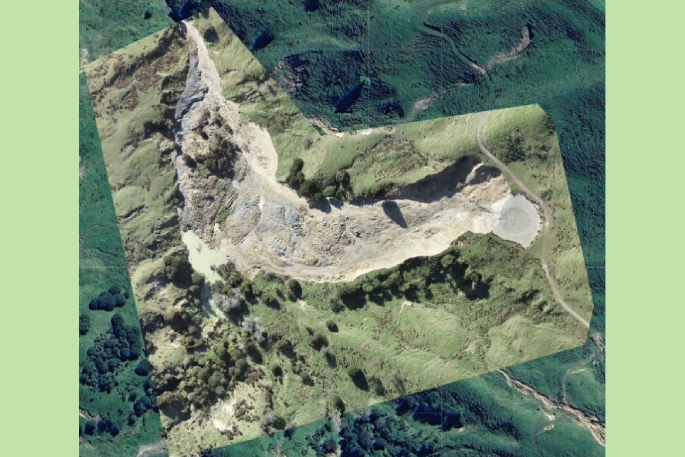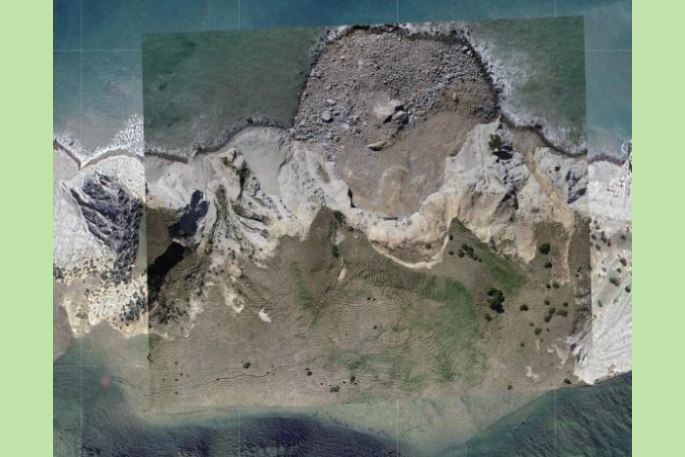Drone surveys undertaken by Gisborne District Council’s Principal Scientist Dr Murry Cave this week have shown two landslides in the region are likely to fail again.
A drone map of the Te Kuri o Pāoa/Young Nick’s Head landslide has revealed significant ongoing risks at a number of sites along the cliff face.
Last Sunday, August 11, it was discovered a large landslide had come down, and a warning went out to people, and boaties, to stay away from the area.
The warning remains after Council’s Principal Scientist Dr Murry Cave flew a drone over the cliffs to map the landslide on Friday, August 16.
“It was clear from this that there would be an ongoing risk from the landslide and a more detailed assessment would be required.
“There’s also significant ongoing risks, not just at the current landslide site but, at a number of sites along the cliff.”
Dr Cave says the detailed assessment will take time.
 Aerial map of Bushy Knoll landslide by Dr Murry Cave.
Aerial map of Bushy Knoll landslide by Dr Murry Cave.
Signs will be put up at gates that allow access into the area to warn people of the risks of rockfall, with iwi and the Muriwai community also notified.
Dr Cave says there had been several failures around the region in the last month.
The Bushy Knoll landslide in Tiniroto is also likely to fail again in heavy rain.
The drone survey showed around 30,000 cubic metres (more than 70,000 tonnes) of saturated, unstable debris made up the landslide, which came down on July 22.
“If the rain is heavy enough to trigger a further collapse of this landslide, it could generate a debris flow that could travel downstream for a considerable distance," says Dr Cave.
“The most immediate risk that has been identified is to the bridge on Elmers Road which has very little freeboard (clearance above highwater level) and was damaged during Cyclone Gabrielle.”
Dr Cave’s assessment of the landslide included looking at aerial photography, which showed the land failure started with Cyclone Gabrielle and progressed after each bad weather event over the past 18 months before it collapsed on July 22.
“The slopes in this area are quite steep and the ground remains very wet like it does elsewhere in the region.
“This means that the landslide is very likely to fail again.”
Dr Cave says Council will continue to monitor the landslides, “particularly after heavy rain”.
He asks anyone who has observed active slope failures or has seen unusual signs of movement on their land - for example, open cracks forming or hollows developing where these have not been observed previously, to contact Gisborne District Council so any possible risk can be assessed.
Contact Gisborn District Council by phone on 0800 653 800 or email service@gdc.govt.nz, or via the GDC Fix App.



0 comments
Leave a Comment
You must be logged in to make a comment.